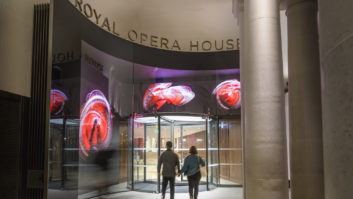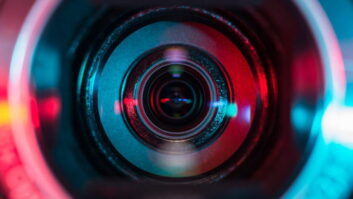When it comes to video resolution, it has frequently felt as if innovation has never stopped moving – especially since the advent of HD. But in the last five years, in particular, the pace of change has seemed genuinely relentless as Ultra High Definition (UHD) began to become the watchword in broadcast and AV.
Hard as it may be to believe, the story of UHD as a real-world technology is now more than 10 years old. Its formal unveiling came with an announcement by the Consumer Electronics Association in October 2012 that UHD (or Ultra HD) would be used for displays with an aspect ratio of 16:9 or wider, and at least one digital input capable of carrying and presenting native video at a minimum of 3840 x 2160 pixels. Today, the main manifestations of UHD are 4K and 8K.
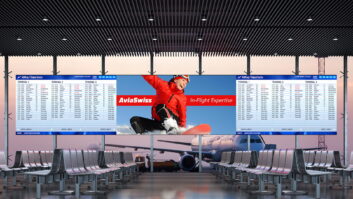 In and of itself, 4K represents a major increase in resolution from HD. Whilst HD is 720p resolution equating to 1200 x 720 pixels – approximately 1 million pixels in total – and Full HD offers a resolution of 1920 x 1080 pixels (so 2 million pixels total), 4K generally offers a resolution of 3,840 x 2160 pixels, equating to around 8 million pixels in total. Whilst the increase in image quality is undeniable, so is the dramatic rise in signal transportation and processing requirements.
In and of itself, 4K represents a major increase in resolution from HD. Whilst HD is 720p resolution equating to 1200 x 720 pixels – approximately 1 million pixels in total – and Full HD offers a resolution of 1920 x 1080 pixels (so 2 million pixels total), 4K generally offers a resolution of 3,840 x 2160 pixels, equating to around 8 million pixels in total. Whilst the increase in image quality is undeniable, so is the dramatic rise in signal transportation and processing requirements.
Therefore, it stands to reason that 8K heralds even greater challenges with its huge resolution of 7680 x 4320 pixels – equating to 33.2 million pixels total. To put that in perspective, it’s double the linear resolution of 4K UHD (four times as many pixels) and six times the linear resolution of 720p (36 times as many total pixels).
PIXEL HEAVEN
That is – to put it bluntly – a hell of a lot of pixels. No wonder, then, that there is no real push in AV or broadcast for 8K as yet, although it should be noted that Japanese broadcaster NHK has launched both 4K and 8K channels. Moreover, despite the scarcity of content produced in 8K, a number of manufacturers – among them Samsung, Sony and LG – are now selling 8K displays.
Hence it seemed like an ideal time to take stock of 8K and find out if – following so swiftly in the footsteps of 4K – it is set to have a viable mainstream future, as opposed to being a technology with limited long-term potential.
As a consultancy and technology solutions provider, Three Media is ideally placed to predict the potential of new technologies. In the case of 8K, CTO Craig Bury indicates that its long-term prospects are some way from being established.
As with 4K, broadcast is set to be the earliest adopter of 8K, “but while there are some multi-camera shoots being done in 8K, the [amount of 8K work occurring] beyond post in the aggregation and distribution aspects is really limited. Simply put, at this point there is no practical means for consuming 8K content with any affordable consumer tools.”
While Bury agrees that more 8K screens are beginning to reach the market, the distribution challenges remain: “What I am referring to here is the issue of the ‘last mile’ in terms of getting an 8K stream out to a designated device, whether it be a PC or a screen of some kind. Our experience with 8K [to date] has been with compressed 8K in a broadcast MCR [Master Control Room] environment that is running between 500 and 600 Mbits p/s.” That would not currently be viable for other environments, indicates Bury.
SHARED RESERVATIONS
David Radoczy, COO of Three Media, shares these reservations. “I don’t think there is a great driver commercially [for 8K at present],” he says. Real-world applications at present would mainly entail a greatly compressed form, and “when the resolution is what it is, there is a law of diminishing returns. It can be a great gimmick to go up to 8K, 16K and so on, but as with 3D there is likely to be a point where the value and the cost of the delivery don’t add up.”
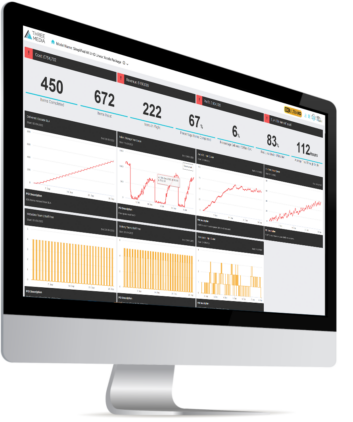 Indeed, there are some industry commentators who believe that the improvement in the visual experience offered by 8K, when compared to 4K, simply does not justify the investment required in delivering the format. From a pure broadcast perspective, it is instead felt in some quarters that High Dynamic Range (HDR) – in conjunction with 4K or even HD – constitutes a better roadmap.
Indeed, there are some industry commentators who believe that the improvement in the visual experience offered by 8K, when compared to 4K, simply does not justify the investment required in delivering the format. From a pure broadcast perspective, it is instead felt in some quarters that High Dynamic Range (HDR) – in conjunction with 4K or even HD – constitutes a better roadmap.
Then there is the impact of other industry trends. In both AV and broadcast, there is an increasing reliance on the cloud for operations and storage. If 4K is already a challenge in this regard – both in terms of usage and cost – 8K is only going to be more problematic.
“When you get to 8K you are talking about very large streams, and gigantic files to manipulate and store,” remarks Bury. “Expenses can be high for manipulating content in the cloud for HD, let alone 4K. Depending on where you are storing the [8K content] you could be looking at very high costs.”
STEP FORWARD
From a vendor perspective, Tobias Augustin – manager product management at Sharp NEC Display Solutions GmbH – implies that the promotion of 8K as another historic step forward is inherently challenging given that 4K has so recently been described in similarly glowing terms.
“After the big move from Full lHD to [4K] UHD, customers and users definitely saw that there is a benefit from higher resolutions,” he says. “But [4K UHD] was praised and marketed as the final step to ultimate realism, so picking up the same story and telling people that they now have to quadruple their resolution once again to have the REAL experience is something informed users will not buy into. The efforts and investments required to not only have end-devices like displays and projectors, but also capable infrastructure and of course content and playout systems achieving 8K are [also very high].”
Moreover, even in AV applications – such as retail and signage – where 4K is now being supported, it is far from being the case that 4K content is always in use. “Even today, with UHD being the de facto standard in TV and professional displays, many installations still use Full HD or upscaled Full HD as content. Especially in retail signage applications, the quality of content is often not matching the capabilities of the equipment; therefore it does not make sense to go even further than UHD. Overall, there will only be very few applications where 8K can make a difference.”
RESOLUTION RISE
There is also the question of how much more image resolution can rise and still register as a meaningful improvement to the viewer’s eye. “Higher resolutions or smaller pixels only make sense if they are perceivable by the viewer,” confirms Augustin. “That means that small displays may not need higher resolutions, and installations where viewers are further away from the display may also not benefit either. Installations covering a large surface may naturally demand higher resolutions to avoid pixels becoming too big and noticeable.”
Hence it’s likely to be sizeable public spaces, such as transport hubs, where 8K is more applicable. Augustin notes: “In the spectrum of professional applications, large video walls for control rooms or data-intense applications like flight information may make sense to have higher resolutions, therefore. Besides that, larger interactive displays in meeting rooms where viewers are very close to the surface could benefit [as well].”
 And whilst he says that “higher resolutions like 8K are not game changing enough to generate new applications”, he does suggest that DPI (dot per inch) could be employed as a standard by which users can select the right technology for their application: “This value can be used to identify how small pixels need to be to support the targeted application in the best possible way. Interactive displays need a higher DPI than signage displays or flight info boards in airports, for example. A DPI guideline for different applications would be desirable in order to achieve the best possible ergonomics.”
And whilst he says that “higher resolutions like 8K are not game changing enough to generate new applications”, he does suggest that DPI (dot per inch) could be employed as a standard by which users can select the right technology for their application: “This value can be used to identify how small pixels need to be to support the targeted application in the best possible way. Interactive displays need a higher DPI than signage displays or flight info boards in airports, for example. A DPI guideline for different applications would be desirable in order to achieve the best possible ergonomics.”
NICHE APPLICATIONS
Meanwhile, although he describes 8K’s likely applications as more “niche” than mainstream, August says that Sharp NEC will address them “with products as soon as the complete application scenario can be addressed entirely. For example, upgrading a meeting room to 8K while still using standard office notebooks with graphics cards that can only support up to UHD does not make sense. Many corporate customers are using all-in-one audio-video conferencing soundbars with cameras and microphones that use an integrated computing device to process the video.”
As things stand presently, “the majority of those [corporate application] devices only support resolutions up to UHD, while some only offer upscaled FullHD. Even if 8K meeting room displays could offer pixels small enough for ergonomic interaction, the playout devices only offer UHD, which means users would have zero benefit. For large scale digital surfaces on the other hand, Sharp/NEC can offer a wide range of 8K solutions even today with our directviewLED portfolio as well as LCD video-walls or edge-blended installation projectors.”
MANAGEABLE TRANSITION
Tony Jones, principal technologist at media technology innovator MediaKind, neatly summarises the main tech factors currently inhibiting the creation of more 8K content. “Sensor technology (to avoid very shallow depth of field caused by large sensors), bandwidth limitations, and storage constraints – particularly for live production – are the primary obstacles to creating 8K content,” he says. “However, this transition becomes more manageable with the increasing shift towards software-based non-live production. Additionally, progress in Super-Resolution technology will enable the delivery of high-quality 8K content using existing 4K production pipelines, effectively accelerating the availability and deployment of 8K offerings.”
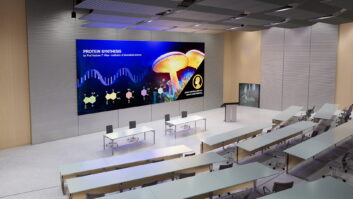 Whilst he does not expect 8K to have a “significant presence” in live production any time soon, he does think it will be increasingly used for original video capture. As with 4K and HD before that, “capturing original footage in the best available format [at that time] is always a good policy, particularly for content that is likely to have long-term value, such as movie content. That, in my opinion, is likely to become commonplace, much in the same way as 4K is today for that market, and as long as the camera sensor capabilities provide a suitable image quality in the range of lighting conditions needed.”
Whilst he does not expect 8K to have a “significant presence” in live production any time soon, he does think it will be increasingly used for original video capture. As with 4K and HD before that, “capturing original footage in the best available format [at that time] is always a good policy, particularly for content that is likely to have long-term value, such as movie content. That, in my opinion, is likely to become commonplace, much in the same way as 4K is today for that market, and as long as the camera sensor capabilities provide a suitable image quality in the range of lighting conditions needed.”
Like 4K, it is probable that sports will be among the most enthusiastic early adopters of 8K in terms of media production. Elsewhere, “while there may be applications for 8K in gaming, it is only practical if we can also have HFR [High Frame Rate]. VR is another potential application, but it would require much higher capture resolution to achieve the desired impact.”
All in all, it seems that the long-term market potential for 8K is far from being proven. For many companies and customers in AV and broadcast, the move from HD to 4K will have been significant enough for now. But if the history of video and display technology tells us anything, it’s that the rise in resolution can ultimately be hard to resist – so you’d certainly be very ill-advised to count 8K out just yet.
